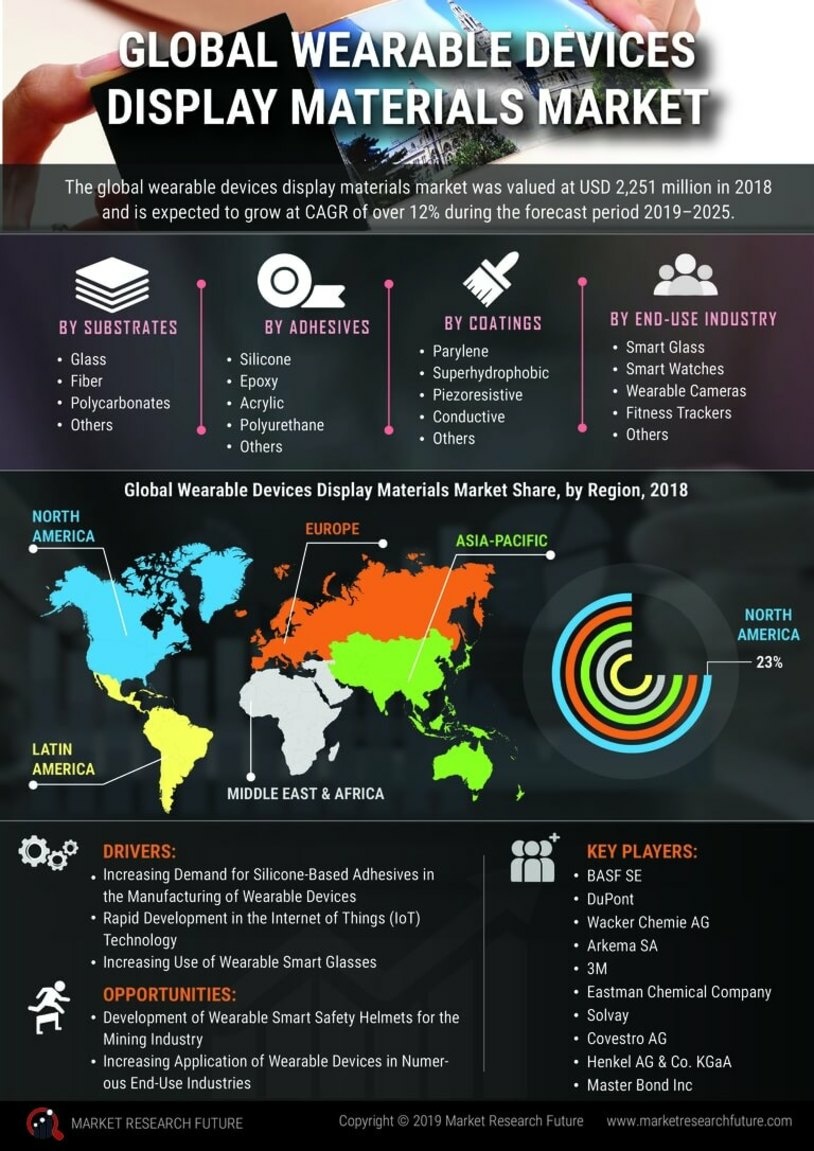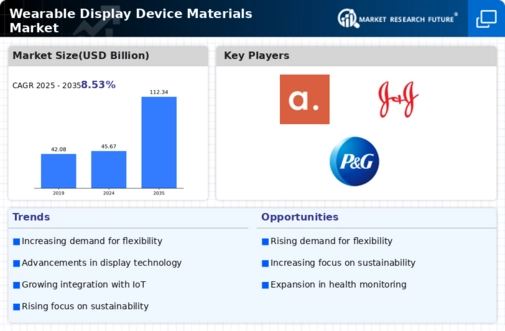Market Growth Projections
The Global Wearable Display Device Materials Market Industry is projected to witness substantial growth over the coming years. With a market value expected to reach 45.67 USD Billion in 2024 and further expand to 112.34 USD Billion by 2035, the industry is poised for a robust trajectory. This growth is underpinned by a compound annual growth rate of 8.53% from 2025 to 2035, indicating a strong demand for innovative materials that enhance wearable technology. The increasing integration of smart features into everyday devices is likely to drive this expansion, as consumers seek more functionality and improved user experiences.
Rising Demand for Smart Wearables
The Global Wearable Display Device Materials Market Industry experiences a surge in demand for smart wearables, driven by consumer preferences for health monitoring and fitness tracking. As individuals increasingly seek devices that provide real-time data, the market is projected to reach 45.67 USD Billion in 2024. This growth is indicative of a broader trend towards integrating technology into daily life, where wearable devices serve not only functional purposes but also enhance lifestyle choices. The proliferation of smartwatches and fitness bands exemplifies this trend, as manufacturers innovate with materials that enhance durability and display quality, thereby attracting a wider consumer base.
Emergence of Augmented Reality Applications
The emergence of augmented reality applications is reshaping the Global Wearable Display Device Materials Market Industry. As AR technology becomes more mainstream, the demand for wearable devices that support immersive experiences is on the rise. This trend is particularly evident in sectors such as gaming, education, and training, where AR enhances user engagement and learning outcomes. Manufacturers are increasingly focusing on developing materials that facilitate high-quality displays and user interaction, thereby expanding the market's potential. The integration of AR capabilities into wearable devices is expected to drive innovation and growth, positioning the industry for a dynamic future.
Growing Health Awareness and Fitness Trends
Growing health awareness and fitness trends are driving the Global Wearable Display Device Materials Market Industry. As consumers become more health-conscious, the demand for wearable devices that monitor health metrics such as heart rate, sleep patterns, and physical activity increases. This trend is reflected in the rising sales of fitness trackers and smartwatches, which utilize advanced materials for better performance and user comfort. The market's expansion is further supported by the integration of health-related features in wearable technology, appealing to a broader audience. This shift towards proactive health management is likely to sustain growth in the industry for years to come.
Increased Investment in Research and Development
Increased investment in research and development plays a pivotal role in shaping the Global Wearable Display Device Materials Market Industry. Companies are allocating substantial resources to explore new materials that enhance the functionality and aesthetics of wearable devices. This focus on innovation is likely to yield breakthroughs in lightweight, flexible materials that can withstand daily wear and tear. As a result, the market is anticipated to expand significantly, with projections indicating a rise to 112.34 USD Billion by 2035. This commitment to R&D not only fosters technological advancements but also positions companies to meet evolving consumer demands effectively.
Technological Advancements in Display Technologies
Technological advancements in display technologies significantly influence the Global Wearable Display Device Materials Market Industry. Innovations such as OLED and microLED displays offer superior image quality and energy efficiency, which are crucial for wearable devices. These advancements not only improve user experience but also extend battery life, a critical factor for consumer acceptance. As manufacturers adopt these cutting-edge technologies, the market is expected to grow at a CAGR of 8.53% from 2025 to 2035. This growth trajectory suggests a robust future for the industry, as enhanced display capabilities become a key differentiator in a competitive landscape.




